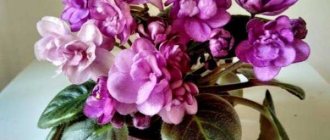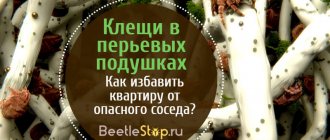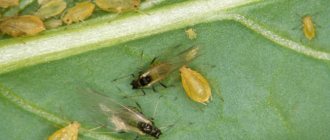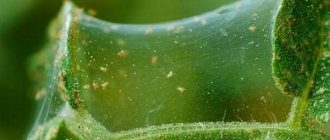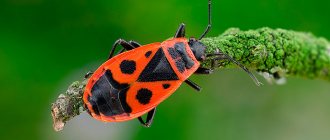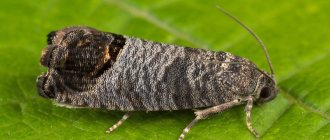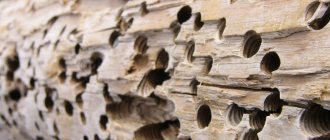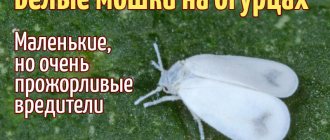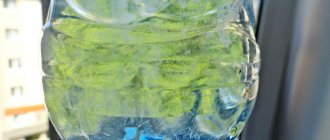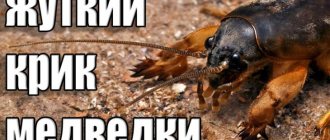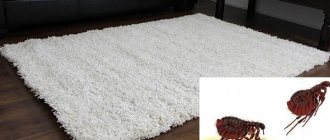The slobbering penna is one of the frequently occurring garden pests. They appear mainly from June to September. They love to eat beautiful crops. For example, vegetable and flower crops can become food for this pest. Usually, they are located where high humidity accumulates. In greenhouses, greenhouses, waterlogged lowlands and beds overgrown with weeds.
The pest received this unusual name due to its unusual form of wintering. They survive the cold season in a liquid resembling foam or saliva. It protects against predators, beneficial insects (for example, from being eaten by ladybugs), and from treatment with chemicals. And when the phase of recovery from hibernation begins (usually in May), the invasion of leafhoppers (an alternative name for the pest) completely destroys the crop.
The greatest damage that these pests cause is infection and destruction of the entire crop even before entering the fruiting stage. Due to plant poisoning, the leaves change shape, color, then their growth stops, they wither, and then die completely. Cicadas pierce the stem, drink the juice and release their poisonous liquid. They live in places where leaves begin to grow, shoots and pedicels.
An adult develops in about a month to two months. At the end of September, the female lays eggs in the bark of trees and dies.
The most popular and widespread species is the green pennitsa. This species is capable of completely destroying an entire young garden. In addition, the green pennitsa is a carrier of a huge number of infections and diseases , from which plants/trees take a very long time to recover.
Therefore, it is very important not only to know how to deal with this type of pest, but also to properly care for your garden in order to prevent even the occurrence of this pest.
Description of the insect
The leafhopper is an insect from the order Homoptera, widespread in Europe, Asia, North America and Africa. Sometimes the pest is found in the harsh climate of the northern regions. The pennywort settles on wild and cultivated plants.
The insect is a jumping moth with triangular wings, similar in appearance to a moth butterfly. The body length of an adult is 5–8 mm. The color is gray, brown or olive. The wings, covered with fine fluff, are folded into a small house. The insect's head is large and equipped with a proboscis for feeding. The butterfly can fly and run. In case of danger, jumps to a height of up to 70 cm.
Once a year, each female lays up to 40 eggs, from which larvae 3–4 mm long hatch. This butterfly does not have a pupa development stage. Larval caterpillars begin to suck juices from plant stems immediately after emerging from the eggs. Their habitat is covered with thick white foam. This kind of cocoon serves as protection for young insects from the external environment, predators and poisons.
Each larva turns into a butterfly by autumn. Females lay eggs, which survive the winter in plant debris and hatch when the weather warms in April-May. The insect completes its development in 30–40 days.
Distribution of phytophage
The common slug is found in most European countries, Russia, Asia, Japan, and North Africa. The species was introduced to North America and Canada and took root well there. Insects are found in regions with a harsh climate - Murmansk, Khabarovsk, Dudinka, Kamchatka, Primorye.
Information. Penny can fly and run, but in case of danger she makes a powerful jump.
What harm does
Adults and insect larvae feed on plant juices, mainly preferring young shoots and leaves. Parts of plants deprived of nutrients shrink and become covered with yellow spots. As a result, the plant slows down its development. The yield of crops infected with leafhoppers is reduced by 30-40%
Pennywort is a carrier of fungal and viral diseases. After infection, plants lose immunity and take a long time to recover.
Kinds
In nature, there are several types of jays, each of them has its own individuality, expressed in the color of its plumage.
Decorated jay
The Ornate Jay is an exotic bird of the corvid family. The owner of a very beautiful color: chestnut-violet color. Along the wings there is a violet-blue stripe and one thin white stripe, 0.5 cm thick. A similar combination of colors is concentrated on the head. The beak and legs are painted white. The eyes are black. It got its cute name thanks to its extraordinary colors. The bird inhabits the Japanese forests of the islands of Oshima and Takanoshima, where it is endemic. It builds nests deep in the hollows of trees. Over the course of a year, the jay gives birth to three or four eggs. It bases its diet on exotic acorns, and consumes small reptiles and invertebrates as a delicacy. The body dimensions are identical to the common jay. Birds adhere to a collective way of life.
blue jays
Blue jays get their name from their blue and sky plumage. The back is painted blue. The wings are covered with contrasting specks of blue, cyan and black. The neck is framed by a black headband that looks like a necklace. The tail is painted with black stripes, and the undertail and underwing are white. Interestingly, the blue jay has a small comb that sticks out on its head. The bird's eyes are black, as are its legs. Birds reach up to 30 cm in length. Weight ranges from 70 to 100 grams. The wingspan is 42 cm. The bird is the largest of all jay species. They live both in pairs and in small communities. But the flight is carried out only in a flock. They remain faithful to their soulmate throughout their lives. The couple builds a nest together and feeds the chicks. But only the female is incubating the eggs, while the husband takes care of getting food. Most often, the clutch consists of three to six eggs with green splashes. Birds are able to warn well of impending danger, and by imitating the voices of wild animals, they completely scare away predators. Favorite delicacies are nuts, cedars, peanuts, and berries. Sometimes this species steals small eggs from the nests of other birds, but this happens only in extreme necessity - when weather conditions do not allow survival. The bird inhabits Canada, the USA, and the territory near the Gulf of Mexico.
Steller's black-headed blue jay
Steller's black-headed blue jay inhabits Western and Central America, Alaska, Columbia, and California. It nests in pine groves and on mountain slopes. They do not leave their place of residence. The coloring of this bird consists of black and blue shades that cover its body like skeins. There is a clearly defined crest on the head. Its size is much more remarkable than that of the blue jay. A white stripe, similar to an eyebrow, forms above the eye. There is striping of blue and black colors on the flight wings. Depending on the location, the color of the plumage can vary from contrasting to less saturated. The black-headed blue jay eats mice, rats, and the eggs of other birds. Its diet is mainly animals. The bird stores nuts and berries for the winter. It is interesting that jays, like all corvids, can use their beaks to loosen the ground and pick out small insects. Building a nest and caring for chicks is identical to the blue jay.
Saxaul jay
The saxaul jay is a desert bird that loves to live alone. This is a very rare species that inhabits Central Asia, Kazakhstan. It builds nests in sand or bushes. It feeds on spiders, scorpions, and ants. Food is obtained on the ground. In general, the saxaul jay cannot fly well. The bird prefers quick dashes. If necessary, performs low and short flight. Avoids packs and pair life. It forms a family only during the mating season, but it breaks up after a month. In the future, they prefer to live alone. In fifteen days, the chicks learn to walk independently and look for alternative food. The coloring of the saxaul jay is not very bright. Since the bird moves by jumping, nature has endowed it with inconspicuous colors. Her entire body is covered with an ash-gray tint, her abdomen is dull pink. The wings have a black rim, as does the entire tail. There is a round black spot on the breast. The beak is thinner than that of ordinary jays. Body length is up to 30 cm, and weight rarely reaches 170 grams.
Conditions for infection and reproduction
The slobbering leafhopper is an almost omnivorous insect. In total, there are 170 species of plants on which this pest lives. The only garden crop that pennitsa often bypasses is tomatoes.
Most often, insects can be seen on the following crops:
- potato;
- cabbage;
- beet;
- tobacco;
- grape;
- chrysanthemums;
- bells;
- phlox;
- raspberries;
- strawberry;
- roses;
- currant.
Expert opinion
Mityuk Stefania Bogdanovna
The insect prefers to settle in shaded places with high humidity. In the wild, it lives in lowlands, along the banks of water bodies, and in dense thickets of grass. The pest's favorite breeding ground in garden plots is densely planted, unventilated greenhouses and greenhouses, overgrown strawberry rosettes.
How the pennitsa destroys the crop
The main source of nutrition for the leafhopper is the sap of young plants, but it is worth saying that this insect not only drinks it, but also injects poison into the shoots of seedlings. After which, garden crops at the first stage of infection simply stop growing and begin to wither, then die.
The leafhopper feeds on the juice of young plants until they have not yet reached the fruiting phase, that is, until the ovaries form on them. Separately, it is necessary to note the plants that most often can be the habitat of the penth leafhopper. The pest is found on:
- potatoes;
- sugar beets;
- cabbage;
- grapes;
- strawberries;
- raspberries;
- currants;
- fruit trees;
- dahlias;
- chrysanthemums;
- roses
The slobbering leafhopper can also appear on other plants, although this happens quite rarely. But you should still inspect the seedlings on your personal plot from time to time in order to promptly identify this pest and protect the harvest.
Fact! The jump of the slobbering pennice can reach 70 cm in height.
Our slobbering leafhopper lives on parsley and strawberries
Pest control methods
It is quite difficult to rid plants of pennies, since the protective shell reliably protects the larvae from poisons. At the beginning of infection, mechanical methods are effective. The affected parts of the plants are cut out along with the larvae and eggs and burned. If the insect has multiplied on the site, they are treated with chemicals or folk remedies.
Chemicals
Ready-made insecticides help garden owners protect their crops from many pests. But not every drug can kill the froghopper.
Gardeners identify several drugs that are effective in combating this pest:
Karbofos
An effective enteric-contact insecticide with paralyzing action. In world practice, the drug is known under the name Malathion. Complete death of pests occurs 3 to 4 hours after the insecticide penetrates the digestive system of insects. To prepare the working fluid, 30 g of the drug is diluted in 3 liters of water. Spraying of plants is carried out no more than 2 times per season with an interval of 4 weeks. The first treatment is carried out before bud break, the second – during flowering.
Aktara
Insecticide from the neonicotinoid group. The active substance is thiamethoxam, which is a paralytic poison. The drug penetrates plant tissue. The insect sucks out juice containing poison and dies within 2 to 12 hours. The drug is used for watering plants at the roots or spraying the above-ground parts. The period of protective action is 60 days for root treatment, 20 days for spraying. The solution is prepared from 1 ml per 3 - 5 liters of water.
Kinmiks
The drug has contact-intestinal action. Effective against larvae and adults. The active ingredient is beta-cypermethrin. The insecticide penetrates the body of insects through the integument and digestive system, causing paralysis within 3 to 4 hours. The protective effect lasts for 15 – 20 days. The spray solution is prepared from 4 ml of the drug per 10 liters of water.
Commander
A potent drug from the group of neonicotinoids. Designed for spraying the above-ground parts of plants during the growing season. The working solution is prepared from 5 ml of insecticide per 5 liters of water.
Before treatment with chemicals, all parts of the plants affected by the pest are cut off. Spraying is carried out in the early morning, after the dew has disappeared, or in the evening, after sunset.
The listed poisons are extremely toxic to humans, warm-blooded animals and bees. They are processed in a protective suit, gloves and respiratory protection. Only plants infected with the pest are sprayed. Treatment is not carried out as a preventive measure.
Folk remedies
Chemicals help to completely rid plants of the pest, but they can only be used before fruit formation begins. Later processing is not permitted. The poison accumulates in the fruits and can cause poisoning.
At a later stage of plant development, you can continue the fight against slobbering pennies using folk remedies:
Infusions of tansy, wormwood. 500 g of crushed raw materials are poured into 10 liters of boiling water and left until completely cooled. The resulting infusion is sprayed onto the plants every 7 to 10 days.
Sprinkling foam lumps with wood ash or fluff lime is effective. These substances do not harm plants, but have a detrimental effect on the larvae.
Infusion of tobacco. 1 tbsp. l. crushed shag, pour 1 liter of boiling water, leave for 1.5 hours. Then filter and spray the plants.
Laundry soap solution. 200 g of grated soap are dissolved in 10 liters of water. The plants are watered with the resulting liquid every 14 days.
Garlic tincture: 1 cup of garlic pulp is poured into a bucket of warm, but not hot, water and left for 2 hours.
Mustard solution. 50 g of dry powder are diluted in 5 liters of water, mixed thoroughly and watered the plants.
Expert opinion
Mityuk Stefania Bogdanovna
Planting strong-smelling flowers next to garden crops: marigolds, calendula, sage helps to scare off leafhopper butterflies. Among the strawberry bushes, which the pest loves, you can place garlic.
Prevention measures
To choose control methods, you need to understand why the pennies appear on the site. The main reason for the proliferation of the pest is increased humidity and lack of sunlight. Excessive watering in combination with thickets of weeds, as well as dense plantings, are the most favorable conditions for pennies.
Which method of dealing with the slobbering pennix would you choose?
FolkChemical
To prevent the insect from settling in the garden, greenhouse or vegetable garden, it is important to follow the rules of plant care:
- carry out weeding regularly;
- observe watering norms, avoiding waterlogging of the soil and stagnation of moisture on the plants;
- in autumn, carefully remove plant debris;
- timely pruning of trees and shrubs;
- ventilate greenhouses and maintain an optimal level of air humidity indoors;
- dig up the trunk circles of shrubs and trees in the fall;
- do not allow plantings of vegetable crops to become denser.
Cicada eggs are stored in cracks in tree bark during winter. Washing the lower part of the trunk with warm water using a stiff brush, followed by whitewashing with slaked lime helps reduce the number of insects.
How does it appear on strawberries and why is it “mealy”?
The mycelium of the marsupial fungus is the causative agent of powdery mildew; in winter it hides under plant debris. When warm days arrive, spores begin to germinate. The first to be affected is the tender young shoots of strawberries.
Signs of the disease appear in early May in the form of a white cobwebby coating on the petioles and the underside of the leaves. The fungus does not touch the root system. If you look closely at the leaves, you can see specks - these are the spores of marsupial fungi. The disease has nothing to do with flour; the name reflects the similarity of the speckled coating with flour powder.
The fungus multiplies at tremendous speed, crawling along peduncles, tendrils, ovaries and fruits. The vascular system of the plant gradually becomes unviable, the edges of the leaf segments begin to wrinkle and bend. The stems and leaves thicken, become coarser, and change from green to rusty brown. The bush becomes deformed, the foliage curls upward and dries out. The mustaches that have managed to grow die off. The fruits covered with white cobwebs crack, lose juice, turn brown and dry out. Putrefactive bacteria have a strong musty odor. Strawberry flowers also suffer irreparable damage. Pollination of inflorescences becomes impossible.
The optimal conditions for the development of powdery mildew are:
- air temperature +18℃…+23℃;
- humidity 70%.
These conditions are typical for the period when flower buds are actively forming on strawberries.
If the temperature drops below +3℃ or rises above +35℃, the marsupial fungus dies.
Conidiospores spread throughout the garden through the air, with the help of the wind. They can be brought into a neighboring bed when transplanting infected seedlings or with dirty garden tools.
Prevention of the appearance of pennies on roses
The following preventive measures will help you never encounter slobbering pennies on rose bushes:
- Standard rose care techniques must be followed. A healthy plant with strong immunity can cope with the pest on its own. It is much more difficult to pierce the bark of a strong bush, and to destroy it will take a lot of time, during which you can get rid of the insect;
- Omnivorous leafhoppers prefer moist, shaded areas. The rose should not initially be placed in such a place to protect it from insects and fungal diseases;
- The slobbering pennice is afraid of the smell of protective plants. If you plant calendula, marigold, sage or garlic next to a perennial, the insect will not be able to attack the rose. Hemlock and bear's bow are also suitable for protection;
- The presence of wasps and hornets in the garden obviously protects roses from pennies, since they destroy these pests.
You can see what the pest looks like here:
Getting rid of pennies on roses is not difficult if you know what to use for this. You can destroy the insect without using chemicals. Compliance with the rules of planting, rose care and prevention guarantees the absence of these insects on the bushes.
Jaundice
When the fact of underdevelopment of phlox bushes, curling and chlorosis of leaves appears, experienced gardeners make a diagnosis: microorganisms from the class of bacteria - mycoplasma - have settled on the phloxes.
Concerns about the fact that phlox leaves turn completely yellow, how to treat ailments, and why phloxes do not bloom are justified.
Attention! Mycoplasmosis has practically no cure. Plants are destroyed, the ground under them is disinfected
But there is a solution to the problem of how to treat phlox chlorosis if it arose due to improper care of flowers. The yellow tip of a young leaf on a phlox stem indicates that it lacks iron. When the number of such leaves increases, plants are fed with complex fertilizers, because it is difficult to determine without laboratory research what minerals plants need.
Phlox jaundice
Varieties
The most common types of bevels are:
- Raspberry-strawberry. The elephant has an oval shape, the color of the body and proboscis is black. Covered with dense light gray bristles. Grows in length up to 3 mm. He prefers to settle in the European part of the country, as well as in Altai and Siberia. It feeds on blackberries, raspberries, strawberries, rose hips, strawberries and other berries. Leads an active life from May to June. Overwinters in the soil.
Raspberry-strawberry weevil
- Small black. The body of this individual looks like an elongated oval. The trunk is short and wide at the end. Color – black or brown, but with a shiny tint. The body is decorated with chiseled grooves and sparse gray stubble. The length of the elephant is 5 mm. He lives only in the European part. The diet consists of berries, beets, alfalfa and conifers. The beetle is active only in the dark.
- Burdock or rough. The body has the shape of an oval, its color is light brown. There are also sparse whitish bristles. The insect is called rough because of the presence of yellow scales and raised tubercles on its body. The proboscis of this beetle is not long; on the contrary, it is short and widens towards the base. The length of the insect is 7 mm. It is widespread everywhere. Prefers to eat buds, tops of berries or vegetables. The larvae eat mainly roots. Most active during cloudy weather. He has good acting skills: if you touch him, he will pretend to be dead.
Burdock elephant
- Furrowed. The elephant is colored brown or gray-black with yellow streaks. There are dotted grooves on the body. The proboscis is short and wide. Length – 10 mm. Prefers to live in “warm” places: in a greenhouse, greenhouse or nursery. It can feed not only on berries, but also on industrial crops. Does not disdain decorative flowers. The beetle has a special love for the grapevine. Adult insects eat buds, leaves and fruits, while the larvae destroy the roots.
- Alfalfa. The largest beetle on this list. Its length can be up to 12 mm. The body color is black or brown. It is completely covered with gray scales and yellow bristles. You can find it in the Caucasus, in the European part of Russia or in Southern Siberia. In addition to berries, it actively nibbles on legumes, vegetables, and hops. Active - from May to July in the morning or evening.
Preventive actions
Weed control and timely removal
Strawberry mite on strawberries: how to fight
It is always easier to prevent the appearance of insects than to get rid of them. It is necessary to regularly inspect plants for the presence of insects. To prevent the formation of foam on strawberry leaves, it is necessary to follow not only all the rules for caring for strawberry and strawberry varieties, but also treat the crops with special preparations in a timely manner. Effective preventive manipulations for the appearance of pennies:
- Treat the soil with steam, using semi-steam treatment effectively.
- Weed control and timely removal.
- To prevent foam from forming on strawberry bushes, when planting, you should maintain an interval between seedlings. Among dense plantings, the probability of damage increases significantly.
- Damaged, dried parts of the plant should be regularly removed and destroyed.
Having figured out what kind of drool is on strawberries, you need to act immediately. The slobbering pennies are a fairly common type of insect, but if the agronomist diligently follows all the rules of agricultural technology, the pest will not appear in the summer cottage.
5 2 votes
Article rating
Options for using roses
Cinderella looks good in different types of flower beds. Ordinary flower beds are suitable, where a tall rose will stand in the center surrounded by low-growing herbaceous plants and flowers of brighter, contrasting shades.
The rose can occupy a leading place in mixborders, among more modest perennials. For the park, a good choice would be ridges in which Cinderella will bloom alone.
You can grow a climbing rose in your garden plot if weather conditions permit. In this case, the rose will get caught on a vertical surface, such as a wall or fence.
Clear / White / Gray sputum
It is normal to occasionally cough up a small amount of phlegm. However, excessive production of clear or white sputum may be abnormal in some cases, such as:
- respiratory tract infections caused by a virus - clear to white sputum
- asthma – thick, white/yellow sputum https://moskovskaya-medicina.ru/astma/astma-osnovnye-fakty-zabolevaniya.html
- chronic bronchitis (COPD) – clear/gray sputum
- pulmonary edema (fluid in the lungs) – clear, white, frothy sputum
- after nasal drops
- allergic reaction
- gastroesophageal reflux disease or GERD
Cigarette smoking and air pollution can cause grayish phlegm to be produced. Clear or white sputum may also precede the appearance of yellow or green sputum, especially early in the infection. However, white, frothy sputum may be a sign of health problems that are causing fluid to build up in the lungs—or indicate pulmonary edema.
Protecting strawberries from slugs
These mollusks are not averse to eating not only strawberries. They harm many vegetable and garden crops.
Slugs eat both strawberry leaves and fruits
In addition to eliminating excess moisture in the strawberry bed, you can contain the invasion of slugs with the help of sawdust. Just sprinkle them on the soil around your garden strawberry bushes.
Mustard infusion is also effective against these voracious pests. Dissolve 100 g of mustard powder in 10 liters of water and water the soil in the garden bed with the resulting solution.
And pests such as the strawberry transparent mite, the strawberry-raspberry weevil, the strawberry sawfly, the strawberry leaf beetle and the pennies can be effectively dealt with using hot water. In early spring and after harvest, simply water the strawberry bushes with water heated to 65°C.
As you can see, you can fight strawberry pests without chemicals. However, do not forget about preventive measures, otherwise a large number of insects inhabiting the strawberry bed will not be destroyed without “chemistry”.
Sand slugger
This is an earthy-brown beetle, its body length is between 7–10 mm. The back and elytra are mottled with tubercles. Distribution zones: the Baltic states, southern and central Russia, Siberia, Central Asian countries of the former USSR. The beetle causes serious damage to melons and vegetable crops: it eats leaves, stems, and destroys seedlings. Egg laying begins in April and May right on the soil next to the plants that the caterpillars will subsequently feed on. The larvae, 15–17 mm long, resemble wireworms; in scientific sources they are called false wireworms (they have a brownish-brown tint). Their destructive activity is not immediately detected by inexperienced vegetable growers, since the damage is caused mainly to the root system. The larvae are located thoroughly in the ground, where they pupate.
Control measures
Experts recommend using lime and alkaline fertilizers to combat the beetle. Therefore, liming is a very effective agricultural technique, along with the addition of ammonium sulfate and ammonium nitrate, before spring tillage. Deep plowing, frequent loosening of the soil, and weeding give excellent results when the slow grass has not yet had time to multiply in your garden. When there are a lot of beetles, crops are selected for planting that the slow-moving bug does not eat - buckwheat and legumes. Treatment of seeds with a suspension of 65% s. n. fentiuram or fentiuram-molybdate 4 g per 1 kg of seeds will repel the beetle not only from the seeds in the soil, but also from the seedlings of many vegetable plants on your site.
Strawberry mites
These are very dangerous pests of strawberries, and the fight against them deserves special attention.
Female mites are oblong-oval in shape, yellowish in color and up to 0.25 mm long. Males, making up only 15% of individuals in the population, are one and a half times smaller in size. Adult females survive the winter well, hiding behind the stipules, and in the spring, when young leaves appear, they lay eggs on them. The strawberry mite is capable of producing up to five generations over the entire growing season. The maximum number is reached in August, when the period of formation of rosettes begins.
These strawberry pests spread mainly in shaded and waterlogged places. The photo of the affected plant posted on this page makes it possible to see how severely the leaves are deformed, acquiring a wrinkled appearance and a yellowish tint. Gradually they die off and the plant dies.
Preventive measures include the improvement of planting material. To do this, heat treatment is carried out, keeping the seedlings for 15 minutes in water at a temperature of +45 ⁰C. When the first signs of the presence of strawberry mites are detected, strawberries are treated against pests with gray colloidal solution diluted at the rate of 50 g per 1 liter of water. 10 days before flowering, a second treatment is carried out using the drug “Neoron”.
Morphology
Imago. A stocky planthopper of medium size, 5–6 mm long. The top is covered with sparse hair. The color is variable: from pale brown to black, sometimes gray, reddish or greenish. There may be light bands or longitudinal stripes on the body.
The vertex in the anterior part is obtusely rounded, at the apex there is a triangular-shaped frontal plate.
The pronotum is longer and wider than the head, the lateral margins slightly diverge to the sides.
The elytra are dense, leathery, and completely cover the abdomen.
The tibiae are round in cross-section, with two teeth on the outer edge and a double rim of spines at the apex below.
Sexual dimorphism. Individuals of different sexes differ in the structure of their genitalia.
Secondary sexual characteristics:
Male. Anal tube with ventrolateral teeth. The pygophorus on the posterior lateral margin has no teeth.
Egg. Small. The eggs are arranged in groups of 30, covered with the female's secretions.
The larva is imago-like.
Phenology of development (in days)
Imago. Fledgling in Central Europe is observed in June - July, in Azerbaijan - at the end of May. They die off with the first frost.
Fledged adult leafhoppers feed on plant juices.
Mating period. Oviposition in Central Europe is observed in September - November, in Azerbaijan in late October - early November. Eggs are laid in groups of up to 30 pieces between the stems and sheaths, in cracks of the stems no higher than 5–10 cm above ground level.
The egg overwinters.
The larva emerges from the egg in Northern Europe in April - May, in Azerbaijan - in March - early April. The larvae crawl throughout the food plant and develop for 3–7 weeks in a lump of foam. The secretion of the foamy mass ceases only by the fifth age.
Imago. They fledge in June-July in Northern Europe, in Azerbaijan - at the end of May. Found everywhere until the first frost.
Features of development. One generation develops per year. Initially - on herbaceous plants, populating meadows. Subsequently, migration to cultivated plants is observed. Heat-loving and moisture-loving species.
Stem nematode
This is one of the most harmful pests of garden plants. Damages over 400 species of flora. Nematodes are white transparent worms of microscopic size (0.1-1 mm). They live inside the leaves, buds, peduncles and tendrils of large-fruited garden strawberries (strawberries). Pests emerge from plants when there is heavy rainfall.
Nematodes overwinter in plant tissues. Females lay eggs there in the spring. The development of larvae lasts about two weeks. And new females appear. During the growing season of plants, the pest develops in several generations. If the pest does not like the weather, then nematodes can persist in the soil for a very long time.
What happens to strawberry bushes as a result of their colonization by nematodes?
Leaf petioles, peduncles, and tendrils thicken unevenly and swellings appear on them. The leaves wrinkle and the berries become ugly. If there are a lot of pests, then the mustache stops growing.
How to fight
- Purchase planting material only from special nurseries.
- Destroy all affected plants by burning.
- Do not plant new strawberry bushes in the affected area for the next few years.
- Sow calendula (marigold) on infected strawberry plantings. It is often recommended to sow tagetes (marigolds). Also good. But marigolds in the middle zone do not regenerate by self-sowing in the spring, and calendula can self-sow for many years in beds with any crops.
Notes
- Key to insects of the European part of the USSR. Volume 1. Inferior, ancient-winged, with incomplete transformation / under general. ed. G. Ya. Bey-Bienko. — (In the series: Guides to the fauna of the USSR, published by the Zoological Institute of the USSR Academy of Sciences. Issue 84). - M.-L.: Nauka, 1964. - P. 361. - 936 p.
- Striganova B. R., Zakharov A. A.
Five-language dictionary of animal names: Insects (Latin-Russian-English-German-French) / . - M.: RUSSO, 2000. - P. 42. - 1060 copies. — ISBN 5-88721-162-8. - ↑ Holzinger WE, I. Kammerlander & H. Nickel.
The Auchenorrhyncha of Central Europe - Die Zikaden Mitteleuropas. Fulgoromorpha, Cicadomorpha excl. Cicadellidae. - 2003. - T. I. - P. 525-526. — 674 p. — ISBN 90—04-12895-6. - ↑ (inaccessible link)
- ↑ Key to insects of the Far East of the USSR. T. II. Homoptera and Hemiptera / under the general heading. ed. P. A. Lera. - L.: Nauka, 1988. - P. 278-308. — 972 p. — 1950 copies. — ISBN 5-7442-0921-2.
